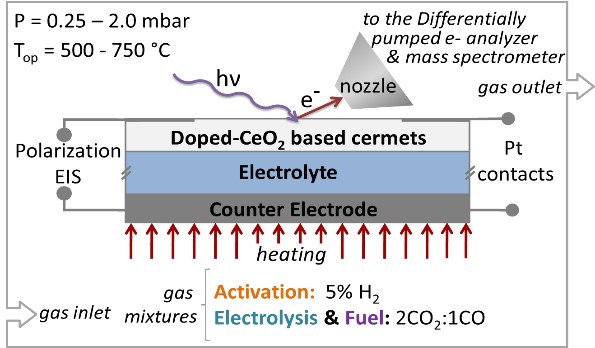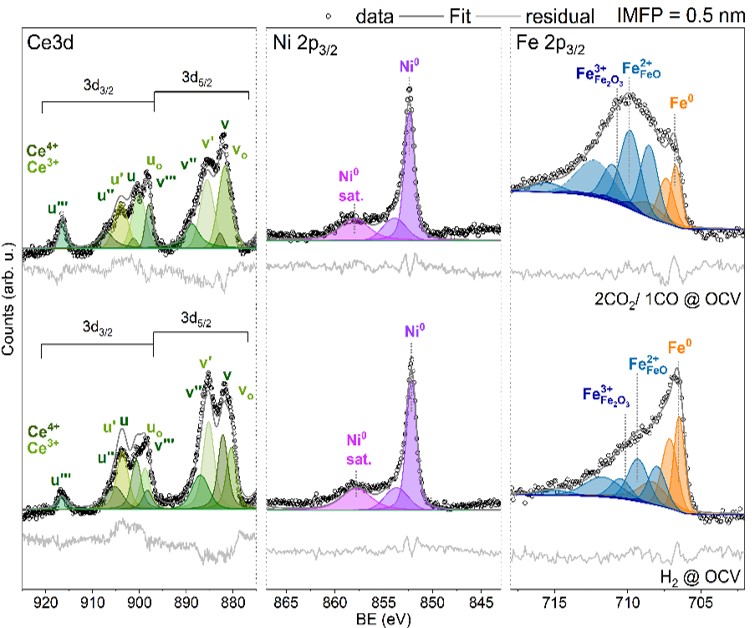Department Interface Design
Doped-ceria based cermets for energy conversion applications
Doped Ceria-based oxides supporting 3d transition metals such as Cu, Fe and Ni (Doped-CeO2 based cermets) have emerged as promising materials for various energy conversion applications, including thermocatalytic processes for sustainable fuel and chemical production, and as electrodes in Solid Oxide Cells (SOCs), see Figure 1. As Solid Oxide Electrolyzer Cell (SOEC), they directly electrolyze CO₂, H₂O, or their mixture, producing CO, H₂, or syngas. In the reverse mode, as Solid Oxide Fuel Cell (SOFC) they generate electricity efficiently from various fuels at intermediate temperatures (500- 750 °C).
Our approach integrates material synthesis with advanced characterization techniques. We use synchrotron-based Near Ambient Pressure X-ray Photoelectron Spectroscopy (NAP-XPS) and X-ray Absorption Spectroscopy (XAS) to study these materials under relevant operation conditions. NAP-XPS (Figure 2) allows us to monitor surface chemical changes induced by the reaction environment, such as temperature and applied potential. By systematically analyzing these structure-function relationships at the solid-gas interface, we aim to improve catalytic efficiency, electrochemical activity, and stability, while also making these technologies more cost-effective. Our research contributes to more sustainable energy solutions by enhancing the performance and scalability of catalytic and solid oxide cell technologies.


